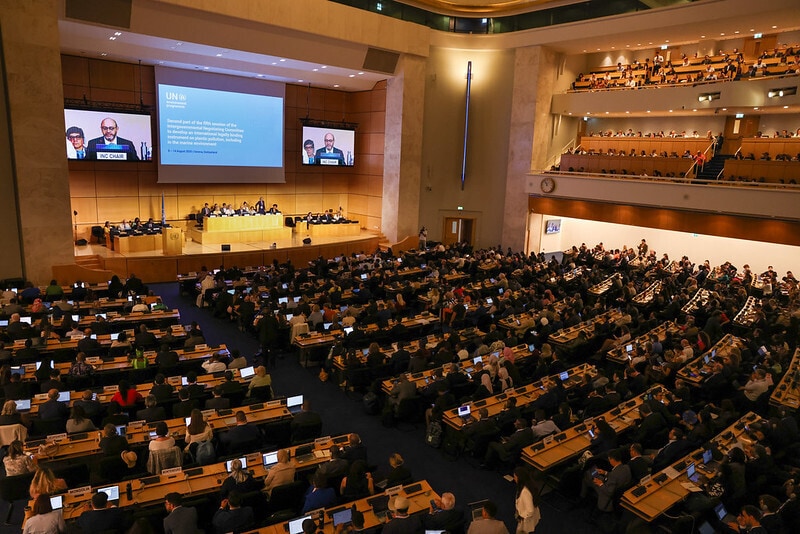What Shackleton’s Antarctic expedition can teach entrepreneurs

Stay up to date:
Future of the Environment
This week, one hundred years ago, Sir Ernest Shackleton was in a world of trouble. The veteran polar explorer had sailed off for Antarctica, on a daring mission to cross the continent on foot. But before he ever got there, his ship – the Endurance – became trapped in ice. Weeks had already passed and for Shackleton and his crew the outlook was grim. Timbers cracked and groaned as the ice pressed in. And winter in the Southern Hemisphere hadn’t even started yet.
I’ve always been in awe of Shackleton’s expedition, but it wasn’t until growing my own business that I began to appreciate the parallels between being an entrepreneur and an explorer. Entrepreneurs rarely risk life and limb literally, of course, but they do put a lot on the line – fortune, reputation, years of their lives. Terrain is uncharted; unknowns pepper the landscape. And on a deeper level, I’d argue, there’s something more – entrepreneurs, like explorers, help us map a way forward.
I’ve looked to Shackleton a lot for inspiration and wisdom over the years, both during dark moments and triumphs. Beyond audacity and doggedness, he also represents basic human decency and fellowship, qualities just as important for entrepreneurs. On the centennial of one of Shackleton’s most trying moments, here are a few lessons entrepreneurs can take from that infamous expedition:
The Shackleton sniff test. What Shackleton originally proposed doing – traversing Antarctica on foot 1,800 miles (2,900 km) from coast to coast – wasn’t just bold, it nearly defied imagination. Just years earlier, two previous expeditions had reached the South Pole but had to make a quick retreat (one team dying in the process). Shackleton was planning to push on clear to the other side of the continent. I’ll leave the “why” question until later. My point is that this was the most audacious undertaking he could conceive of. He went all in, from the start.
For entrepreneurs, it can be worth considering a sort of “Shackleton sniff test” if you will. You may be building a better mousetrap or trying to use genomics to extend the human lifespan. But a useful first question to ask, within the parameters of your business, is: “Is this the most audacious goal I could be working toward?” Iterating, reassessing and pivoting will all, inevitably, come later. But at the outset of your mission, at least, be defiant about your own and others’ assumptions about what’s possible.
Absolutely nothing will go as planned, so plan for it. Shackleton spent years preparing for his journey, raising the modern equivalent of millions of dollars and reportedly selecting his 27-man crew from more than 5,000 applicants. But throughout his entire expedition, just when it must have seemed nothing else could possibly go wrong, something always did. After 10 full months hunkered down inside the icebound Endurance, for instance, the crew discovered the boat was taking on water and sinking. They abandoned ship and set up camp on nearby ice floes, drifting through the sea for more than five agonizing months. Then, their icy camp itself began to split apart and fall into the sea; Shackleton piled his men into three lifeboats and paddled off into the open ocean.
In this unmitigated string of disasters, I see a glimmer of pretty much every business I’ve ever started. Entrepreneurship is like treading water, and then repeatedly getting dunked. You barely have time to gulp a breath before you’re underwater again. You’re forced to learn to live, and thrive, in continuous chaos, somehow planning for the future even while struggling just to make it through the day and grab a few hours of sleep. Shackleton’s resilience, adaptability and endless improvisation in the face of bafflingly bad luck are an example all entrepreneurs can take to heart.
Trust trickles down. After spending five days at sea, Shackleton and his exhausted crew dragged themselves onto a desolate stretch of land called Elephant Island, their first time on dry ground in 497 days. Elephant Island proved a death trap, however – barren, with no hope of rescue. Shackleton made a bold decision to lead a small group on a near-certain suicide mission, another odyssey by open boat but this time to distant whaling stations on South Georgia island some 720 miles away.
Team building is tricky under the best of conditions, let alone after more than a year trapped in the Antarctic. Nonetheless, Shackleton somehow succeeded in keeping his crew together (despite the occasional rumblings of mutiny) and their faith alive. He was a commanding presence, to be sure, and a respected explorer. But he also put himself in the line of fire, time and time again. Without getting too dramatic, I think there’s a lesson here for entrepreneurs. Your team, no matter its make-up, will be tested. Missteps will be made; resentments and recrimination will creep in. But sacrifice and genuine care from the top speaks volumes. Put your people first, make hard decisions and the horizon of possibilities almost always expands.
Desperation drives creativity. After leaving most of the crew behind on Elephant Island, Shackleton and a few men crossed the ocean for 15 straight days in pretty much a glorified rowboat. Forced to improvise, they had raised the sides, built a makeshift deck of canvas and sealed the seams with seal blood. The cold and choppy water was challenge enough. But, within sight of the cliffs of South Georgia, hurricane-force winds bore down on them. Nearby, a 500-tonne steamer caught in the same storm sank; their hacked-together boat, however, held up.
For entrepreneurs, constraints of money, time and expertise go with the territory, but they’re also a beautiful thing because they force creativity and precision. For nearly five years, I bootstrapped Braintree, the payments provider behind Uber, Airbnb and other global businesses. Again and again during those years, my team figured out ways to work within our constraints. A very small example: We had no money for marketing initially, so I started a blog to share our message and spent nights typing out posts. With time, it grew into a leading resource for companies trying to unravel a complex subject – credit card payments. That blog ended up driving far more business than any slick, high-cost marketing effort.
Failure is in the eye of the beholder. Incredibly, the Shackleton saga doesn’t end quite yet. Though his tiny boat reached South Georgia, it had been blown way off course. Equipped with little more than 50 feet of rope, Shackleton and two men proceeded to climb across 32 miles of icy ridges and chasms, finally reaching a manned whaling station – a feat even today’s most accomplished climbers struggle to achieve. They initiated a rescue and, ultimately, a Chilean tugboat and British whaler were able to evacuate the rest of his crew from desolate Elephant Island. Despite spending nearly 600 days marooned in the Antarctic, not a single man under Shackleton’s watch died.
I think this is probably the most valuable lesson for entrepreneurs. Shackleton’s expedition may have failed, but he didn’t fail. History remembers the mission not for falling short of its target, but for the human spirit that shined through as it unfolded. For entrepreneurs, markets may shift, problems may arise that no amount of planning can anticipate and businesses may founder, but success is more than a balance sheet. The “how” of it all –the ingenuity and grit shown along the way – is important, too. As Shackleton’s odyssey vividly shows, failure is in the eye of the beholder.
Finally, there’s that tricky “why” question. Why do explorers push themselves on one mission after another or, for that matter, entrepreneurs put themselves through the gauntlet of starting a business? Before setting out for the Antarctic, Shackleton reportedly took out a job ad for the expedition, promising his men “honour and recognition in case of success.” While that certainly has its place as a motivation, I suspect that he and his team were also drawn by the enduring satisfaction that goes along with exploration.
Even in this era of billion-dollar exits, I’m going to say the same goes for many entrepreneurs. I’ve started multiple companies: some failed; some succeeded. Now I run a fund that invests in entrepreneurs working on global challenges, projects that definitely pass the Shackleton sniff test. For me – and I don’t think I’m alone – entrepreneurship is about more than money, or honour or recognition. It’s about the journey, even the brutal hurdles faced along the way, which is its own reward. As entrepreneurs, we come out the other side different, sometimes better; in the best cases, society does, too.
Author: Bryan Johnson is an entrepreneur, investor and founder of the OS Fund and Braintree (PayPal/eBay).
Image: A foraging Emperor penguin preens on snow-covered sea ice REUTERS/Deborah Zabarenko
Don't miss any update on this topic
Create a free account and access your personalized content collection with our latest publications and analyses.
License and Republishing
World Economic Forum articles may be republished in accordance with the Creative Commons Attribution-NonCommercial-NoDerivatives 4.0 International Public License, and in accordance with our Terms of Use.
The views expressed in this article are those of the author alone and not the World Economic Forum.
Related topics:
Forum Stories newsletter
Bringing you weekly curated insights and analysis on the global issues that matter.
More on Nature and BiodiversitySee all
Tom Crowfoot
August 20, 2025
Chavalit Frederick Tsao
August 19, 2025
Andrea Willige
August 15, 2025
Tom Crowfoot
August 14, 2025
James Balzer
August 14, 2025





